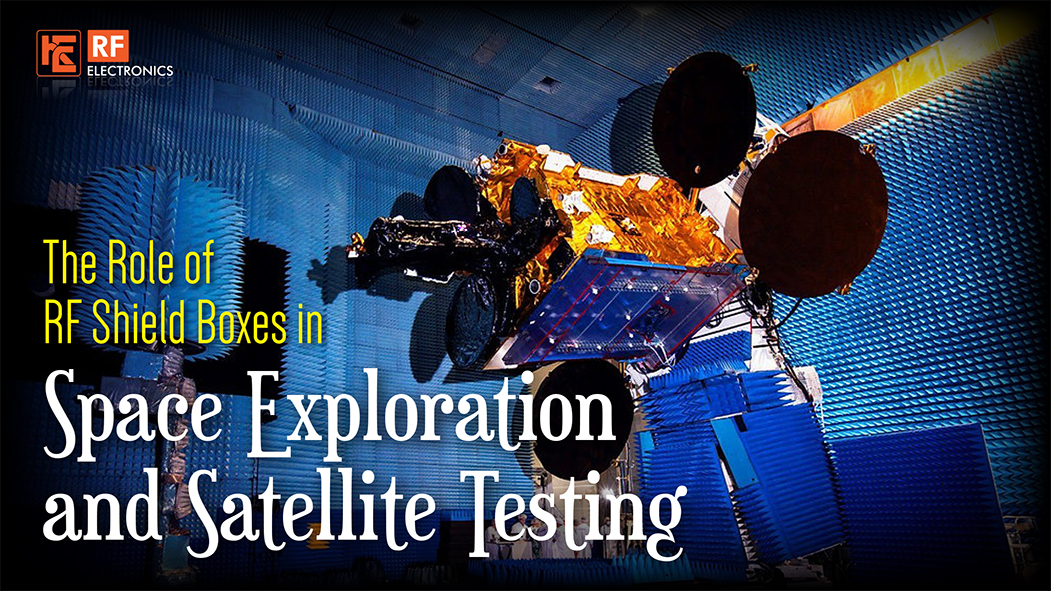May 29, 2025

In the high-stakes world of space exploration, where precision is everything, even the smallest interference can lead to mission failure. Communication systems serve as the backbone of satellite operations, ensuring seamless data transmission between Earth and spacecraft. But how do engineers guarantee that these systems function flawlessly in the extreme conditions of space? One of the key solutions lies in the use of Radio Frequency (RF) shield boxes—essential enclosures that protect sensitive electronics from electromagnetic interference (EMI) during testing.
RF shield boxes, or RF enclosures, are specialized chambers designed to isolate electronic devices from external electromagnetic signals. These enclosures are constructed using high-conductivity materials, such as metalized textiles or specialized metals, that prevent unwanted RF signals from entering or escaping. By creating a controlled testing environment, engineers can assess the performance of communication systems without interference, ensuring accurate results and reliable functionality.
Space is an environment filled with electromagnetic radiation. From cosmic background signals to emissions generated by spacecraft electronics, there is a constant risk of RF interference disrupting crucial communication links. Without proper shielding, a satellite’s ability to send and receive data can be compromised, potentially leading to loss of mission control or operational failures.
By incorporating RF shielding during the testing phase, engineers can identify and resolve vulnerabilities before launch. This ensures that spacecraft communication systems are equipped to handle the challenging conditions of space without suffering performance degradation.
Satellites rely heavily on RF technology for data transmission, remote sensing, and navigation. RF shield boxes play an integral role in multiple stages of satellite development:
1. Component Validation
Before integration into a satellite, critical components such as transponders, antennas, and receivers undergo rigorous testing within RF enclosures. This process ensures each part functions optimally in isolation, free from interference that could impact performance.
2. System Integration Testing
Once components are assembled, the entire communication system is tested inside an RF shield box. This step verifies that integrated systems work cohesively and remain resistant to external EMI, simulating real-world operational conditions.
3. Compliance and Certification
Regulatory bodies impose strict electromagnetic emission standards on space equipment. RF shield boxes allow engineers to conduct precise emission measurements and make necessary adjustments to meet compliance requirements before launch.
Beyond satellite testing, RF shield boxes are indispensable in broader aerospace research:
1. Experimental Simulations
Researchers use RF enclosures to replicate space-like electromagnetic environments, allowing them to study how different systems respond to RF exposure. This helps in the development of more robust technologies that can withstand extreme conditions.
2. Development of New Communication Protocols
As space exploration evolves, new communication protocols are continuously being developed. RF shield boxes provide a controlled setting for testing these protocols, ensuring they function reliably before deployment.
Designing RF shield boxes for space applications requires careful attention to several key factors:
1. Material Selection
The effectiveness of an RF shield box depends on the materials used. High-performance metals or metalized fabrics are chosen for their ability to block electromagnetic signals, ensuring a secure test environment.
2. Size and Portability
Satellites and their components come in varying sizes, necessitating adaptable RF enclosures. Portable shield boxes made from lightweight materials offer flexibility in testing, making them practical for different research and development needs.
3. Frequency Range Accommodation
Space communication systems operate across a wide spectrum of frequencies. RF shield boxes must be capable of blocking interference across all relevant frequency ranges to ensure comprehensive testing.
The field of RF shielding is constantly evolving to meet the increasing demands of space missions. Recent advancements have led to:
1. Lightweight Materials
Traditional RF enclosures were often bulky and difficult to handle. Modern metalized textiles and composite materials now offer high shielding effectiveness while remaining lightweight and portable, making them ideal for aerospace applications.
2. Modular Designs
Newer RF enclosures feature modular configurations, allowing them to be customized and scaled based on specific testing requirements. This adaptability is particularly useful for accommodating satellites of different sizes and designs.
Ensuring the reliability of satellite communication systems is a top priority in space exploration. RF shield boxes provide the controlled environments necessary for rigorous testing and validation, helping engineers refine and safeguard critical technologies before they are deployed. As space missions continue to push boundaries, the role of RF shielding will only become more crucial in ensuring the success of future aerospace endeavors.
Previous Blog

RF Shielding in Electric Vehicle Charging Stations
Learn MoreNext Blog

When and Why to Build your own RF Shield Boxes?
Learn More